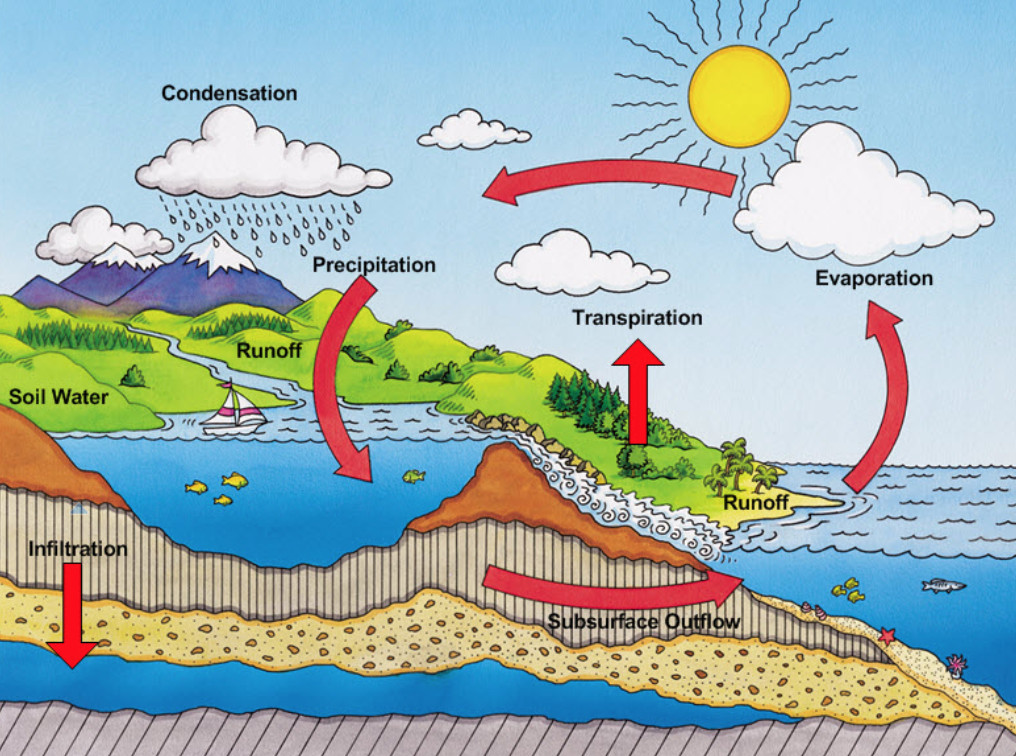
1. Evaporation – The Beginning of the Water Cycle
Rain begins with evaporation, when the Sun heats up water from oceans, rivers, and lakes.
This heat turns water into invisible vapor that rises into the air.
Plants also contribute to this process through transpiration, releasing moisture from their leaves into the atmosphere.
2. Condensation – When Clouds Are Born
As water vapor rises higher into the atmosphere, it cools down.
Cool air can’t hold as much moisture, so the vapor turns back into tiny droplets of water a process called condensation.
These droplets gather together to form clouds.
The more vapor that condenses, the darker and denser the clouds become, signaling that rain may soon fall.
3. Precipitation – Rain Falls to Earth
When water droplets inside clouds become too heavy to stay suspended, they fall back to the ground due to gravity.
This falling water is called precipitation, which can appear as rain, snow, or hail depending on temperature and weather conditions.
Precipitation is the main way Earth receives fresh water.
4. Collection – Water Returns to the Earth
After rainfall, water gathers in rivers, lakes, and oceans.
Some of it seeps into the ground, replenishing underground aquifers this process is known as infiltration.
Eventually, the water evaporates again, continuing the endless cycle of rain.
Why Rain Is Important
Rain is vital for life on Earth.
It nourishes plants, fills rivers and lakes, and helps regulate the planet’s temperature.
Without rain, ecosystems would collapse, and water scarcity would threaten both humans and wildlife.
Summary
Rain forms through a continuous process called the water cycle, involving evaporation, condensation, precipitation, and collection.
This natural system keeps Earth’s water in motion sustaining life, growing crops, and shaping our climate.




